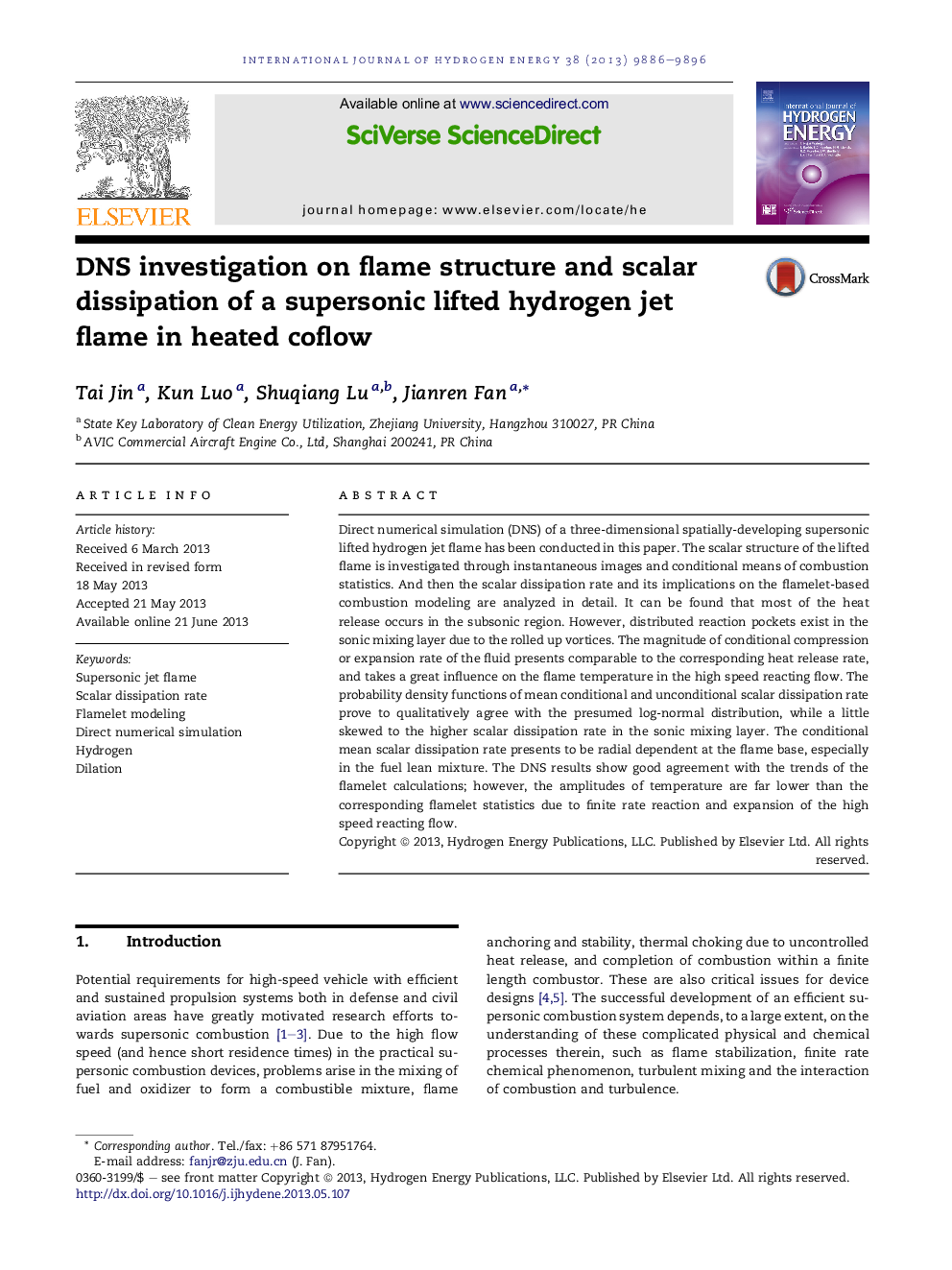| Article ID | Journal | Published Year | Pages | File Type |
|---|---|---|---|---|
| 7722427 | International Journal of Hydrogen Energy | 2013 | 11 Pages |
Abstract
Direct numerical simulation (DNS) of a three-dimensional spatially-developing supersonic lifted hydrogen jet flame has been conducted in this paper. The scalar structure of the lifted flame is investigated through instantaneous images and conditional means of combustion statistics. And then the scalar dissipation rate and its implications on the flamelet-based combustion modeling are analyzed in detail. It can be found that most of the heat release occurs in the subsonic region. However, distributed reaction pockets exist in the sonic mixing layer due to the rolled up vortices. The magnitude of conditional compression or expansion rate of the fluid presents comparable to the corresponding heat release rate, and takes a great influence on the flame temperature in the high speed reacting flow. The probability density functions of mean conditional and unconditional scalar dissipation rate prove to qualitatively agree with the presumed log-normal distribution, while a little skewed to the higher scalar dissipation rate in the sonic mixing layer. The conditional mean scalar dissipation rate presents to be radial dependent at the flame base, especially in the fuel lean mixture. The DNS results show good agreement with the trends of the flamelet calculations; however, the amplitudes of temperature are far lower than the corresponding flamelet statistics due to finite rate reaction and expansion of the high speed reacting flow.
Related Topics
Physical Sciences and Engineering
Chemistry
Electrochemistry
Authors
Tai Jin, Kun Luo, Shuqiang Lu, Jianren Fan,
